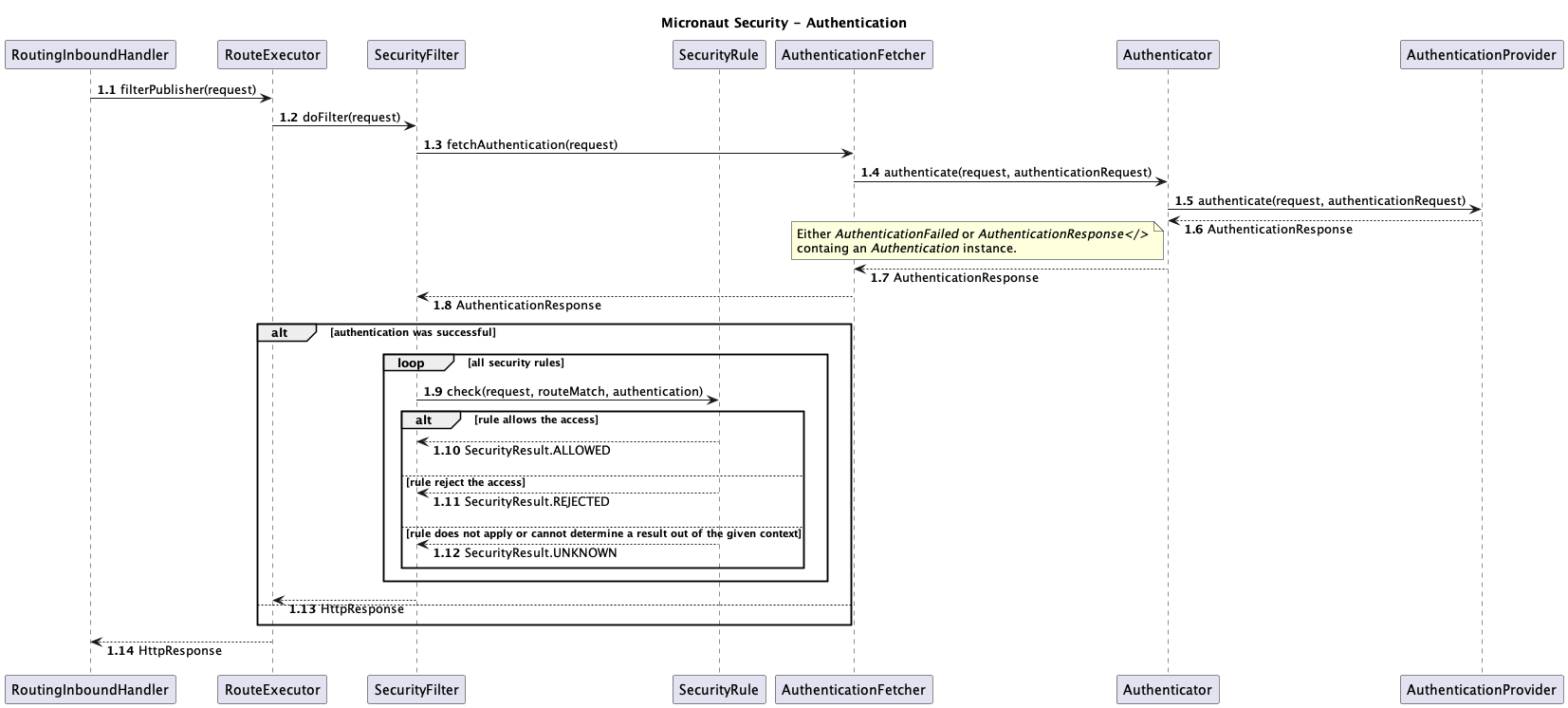How authentication works with Micronaut Security

Have you ever wondered how Micronaut Security internally works? Well, I did and here is want I have found. Hope you enjoy it.
I'm a visual person, meaning I love pictures or any other visuals to understand a certain topic. Recently I had to enable Basic Authentication within a Micronaut 3.6.x application. The nice thing is, that I simply had to apply the following two dependencies to my Gradle build.
depdendencies {
annotationProcessor("io.micronaut.security:micronaut-security-annotations")
implementation("io.micronaut.security:micronaut-security")
// ... other dependencies omitted
}By adding these two dependencies, Micronaut Security is part of your application. As a next step I needed to turn on the security feature and secure the API paths.
micronaut:
application:
name: artinaut
security:
enabled: true # turn on Micronaut Security
basic-auth:
enabled: true # enable basic authentication (default is: true)
intercept-url-map: # Secure the API
- pattern: /api/v1/**
access:
- ADMIN
- pattern: /repos/**
access:
- isAnonymous()
- isAuthenticated()HTTP Request with path /api/v1/** automatically require an authenticated user having the role ADMIN. And HTTP requests to /repos/** are available to the public. So how do I tell Micronaut Security about my users and their roles? The answer is that I need to provide an AuthenticationProvider. So here is what I did.
- Pick the username from the
AuthenticationRequest. - Try to read the user from the database using the username.
- Comparing the hashed passwords and either return a successful or a failed
AuthenticationResponse.
@Singleton
@RequiredArgsConstructor
@Slf4j
public class MyAuthenticationProvider implements AuthenticationProvider {
private final UserService userService;
private final PasswordEncoder passwordEncoder;
@Override
public Publisher<AuthenticationResponse> authenticate(
HttpRequest<?> httpRequest, AuthenticationRequest<?, ?> authenticationRequest) {
return Flux.create(
emitter -> {
String identity = (String) authenticationRequest.getIdentity();
UserDto user = userService.findUser(identity).orElse(null);
if (user != null) {
if (passwordEncoder.matches(
(String) authenticationRequest.getSecret(), user.password())) {
final Set<String> roles =
user.groups().stream()
.map(GroupDto::roles)
.flatMap(Collection::stream)
.map(RoleDto::name)
.collect(Collectors.toSet());
emitter.next(AuthenticationResponse.success(identity, roles));
} else {
log.debug(
"Password does not match for user «{}» (user id «{}»)", identity, user.id());
emitter.next(AuthenticationResponse.failure());
}
} else {
emitter.next(AuthenticationResponse.failure());
}
emitter.complete();
},
FluxSink.OverflowStrategy.ERROR);
}
}Easy as pie, thank you Micronaut. It works! But wait, I want to dig in deeper. What else is involved? Since Micronaut does not rely on reflection their source code is very easy to read and debug. I ended up with the following, simplified sequence diagram. It explains what other participants are involved in the authentication process, even before my AuthenticationProvider gets invoked.

I hope you liked it. Thank you for reading.